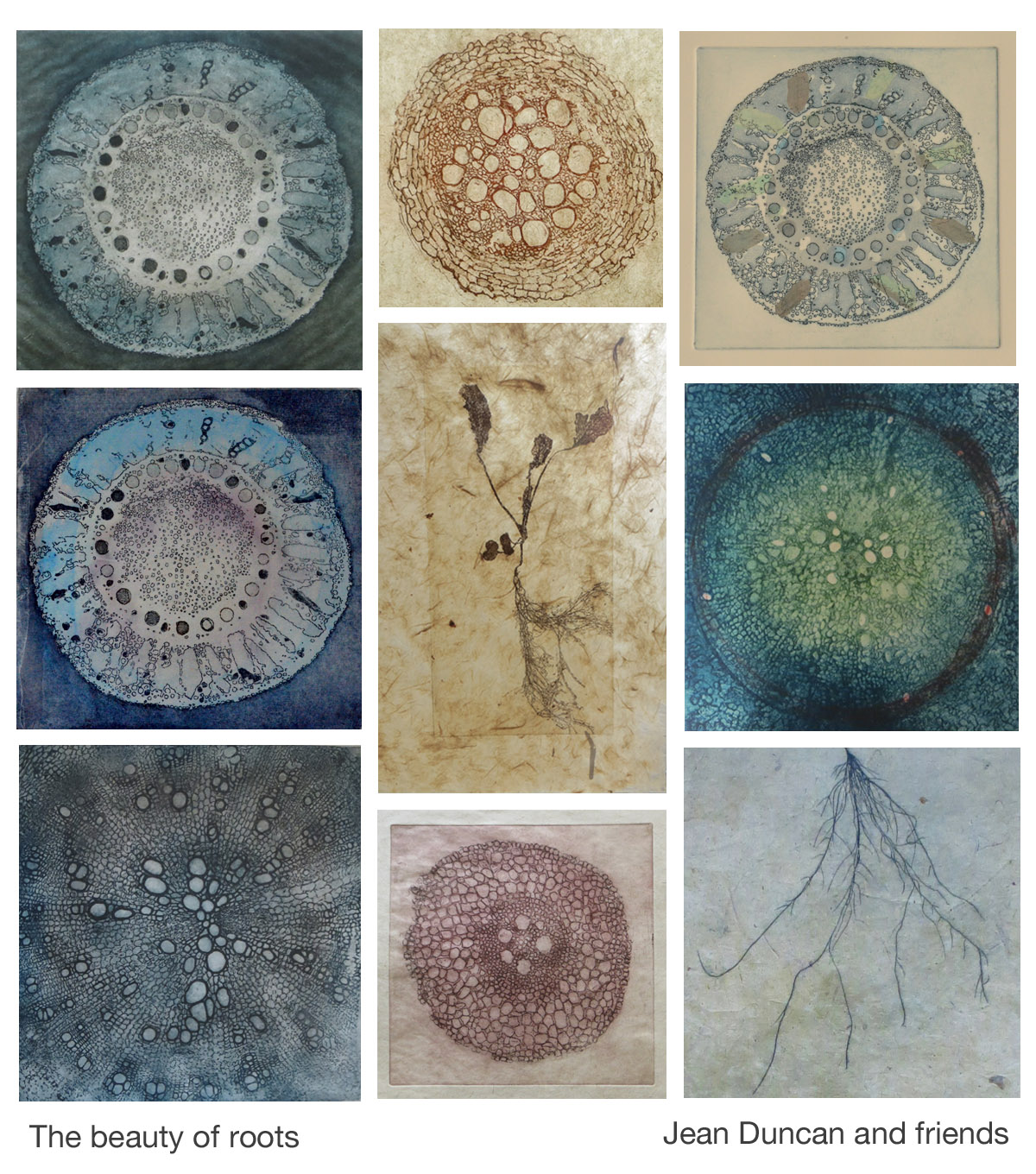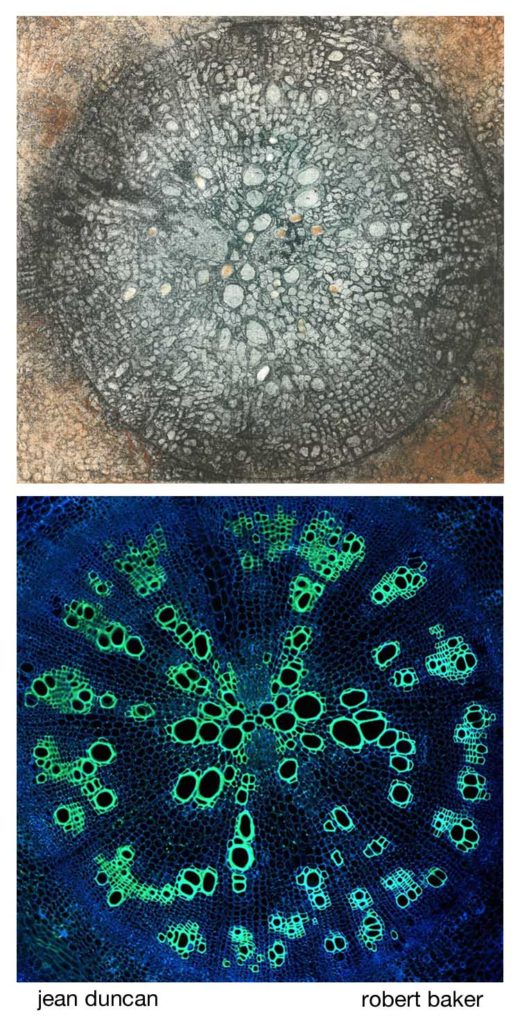Jean Duncan’s been working with Paula Pongrac, Lionel Dupuy and colleagues to capture cross sections of roots in the form of etchings and especially etchings on paper that she makes herself from plant fibre.
Jean has also been preserving seedlings with their seed-leaves, young root system and shoots on plant-paper. The central image in the panel below is of a young brassica plant, impressed on plant-fibre-paper. It looks a bit like a fossil.

The other images are etchings of cross sections through the fine roots of various plants, including brassicas and maize. She expresses all this developing structure in the fine roots etched or pressed into various surfaces. The image lower right shows a very young root system, about 10 cm long, also of a brassica.
How Jean makes these prints is a mystery. Alchemical.
Structures like these form in all roots in all land plants all over the world. The roots take up water to allow the plants to fix carbon dioxide from the air into products that form their carbon-rich structures. The roots take up mineral elements from the soil, which the plant then makes into vitamins and other life-sustaining compounds.
Animals that live on land, including us, eat the carbon, vitamins and minerals both as plants directly or second-hand as meat. Without these microscopic, sliced orbs that Jean captures in her art and paper-making, there would be no life on land as we know it.
Roots have a hard time …. even when they are set to work for us – big machines over-tilling and compacting the ground, the roots trying to grow through hard or slaked soil. Where’s the fun in being a cropland root.
Do they envy those tree-roots growing down 10 metres in a deep African red soil, or even an annual millet reaching 3 m in a sub-Saharan soil (seeking water just to survive), or the stumpy mangrove roots able to cope with being submerged in briny mud, or even the marram grass ‘roots’ of our coastlines extending out metres through hot dry sand, or a legume (bean, pea, clover) seeking to form that productive union with soil-living bacterial rhizobia.
No, there’s little joy being a cropland root today. (But there could be.)
Sources and links
The collection of root images above was prepared by GS from image files provided by Jean Duncan. The panel first appeared on the Living Field web site at The Beauty of Roots.
An exhibition by the same name will be held at the Dalhousie Building, University of Dundee, 17-30 March 2017. Notes and images of the exhibition can be seen at Jean’s page on the Living Field web site.
Jean also worked with plant microscopist Robert Baker, Department of Botany, University of Wyoming http://www.robertlbaker.org and http://www.macromicroscopic.com. Examples on the Living Field web site (e.g. below) can be viewed at Sectioned II.

